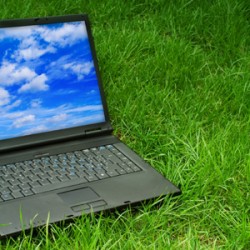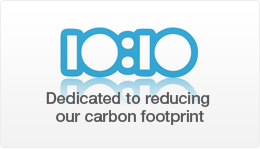 It is little surprise that being green seems to be an important aspect of running a successful coworking business. After all, for a movement that has been borne from the need to foster a community which works to nurture the individuals within it, it makes sense that many coworking spaces are conscientious about how the way they run their businesses will have an impact beyond their own walls. And it is safe to say that operating in an environmentally friendly way is a key part of many of the coworking initiatives we have discussed in previous posts in our Great Minds series.
It is little surprise that being green seems to be an important aspect of running a successful coworking business. After all, for a movement that has been borne from the need to foster a community which works to nurture the individuals within it, it makes sense that many coworking spaces are conscientious about how the way they run their businesses will have an impact beyond their own walls. And it is safe to say that operating in an environmentally friendly way is a key part of many of the coworking initiatives we have discussed in previous posts in our Great Minds series.
Our own green policy
Here at Lemon Studios we have our own green policy which includes recycling facilities onsite and using a specialist cleaning company which only uses environmentally friendly products. Additionally, we have also signed up to 10:10, an organisation founded to assist individuals and organisations of all sizes to cut their Carbon footprint by 10 percent by the end of 2010 – an altogether more easily understood aim in comparison to the far-off goals discussed beforehand in politics and the media.
Basic green options
Of course there are a huge number of ways offices can adapt to become more environmentally friendly. Using recycled paper, printing with tools such as Ecofont and Greenprint, and cutting back on takeaway food waste and packaging is something that can be implemented by individuals and coworking spaces alike. Additionally, here at Lemon Studios we like to think we are well-located enough to give our tenants plenty of options to use public transport wherever possible in order to cut back on vehicle emissions. (Tumblr blog: greencoworking.tumblr.com/ is a good comprehensive list of tips along these lines.)
Digital CO2
Yet, there are some aspects of the coworking lifestyle which might have an environmental impact which is not so obvious. A recent article by Siel Ju over at Mother Nature Network really caught our eye (we tweeted about it back in October) highlights the amount of energy used by everyday computer work. Using statistics gathered by The Guardian, i.e. that each ‘proper’ email we receive creates four grams of CO2-equivalent emissions, she managed to work out that on the average day for a journalist such as herself, she creates around the same amount of CO2 as driving a car a mile just by sending and receiving emails.
Moving forward
Of course all round digital connectivity is simply the way most work gets done in today’s connected coworking world – and how to lessen its environmental impact (beyond power saving options, offsetting the carbon we do use, and looking out for the most energy efficient technology) is surely going to be a big environmental discussion point as social media and digital communications continues to grow in popularity on into 2011. As The Guardian posits the idea of taxing spammers – and using the money for environmental good – I can’t help but wonder if the next significant digital movement after social media will be something along the lines of ‘environmental media’ and I hope the coworking community will be the place which inspires, promotes and nurtures such an agenda.


